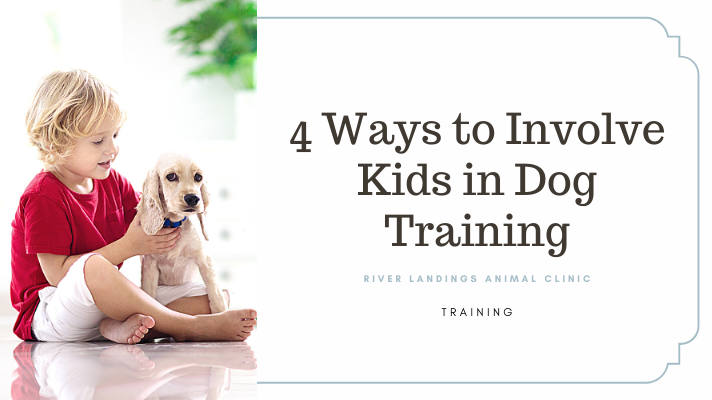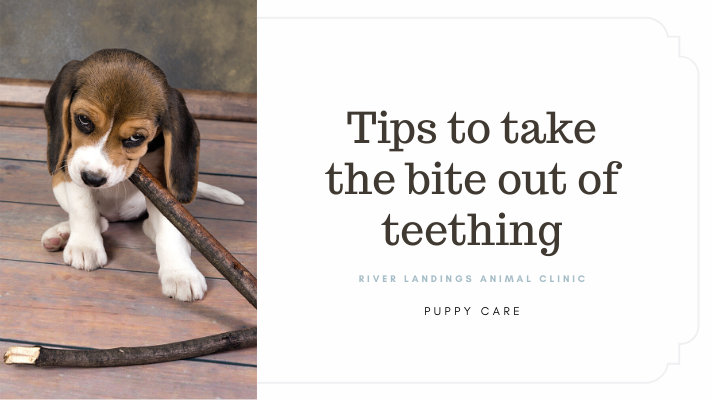When a new dog is introduced to the family, kids are often eager to help out. The easiest way to involve your children is by including them in the everyday responsibilities of owning a dog. Dogs need to be fed, groomed, and exercised—these are all tasks that children, especially elementary-age kids, can be involved in. Children of all ages can participate in dog training as long as the tasks are age-appropriate and there is adult supervision.
Learn the Basic Commands
The full responsibility of dog training should still remain with the adults, but that's no reason to leave your child completely out of the process. Your child doesn't have to be involved in the complicated aspects of training to bond with the dog. Basic skills such as getting a dog to sit, stay down, come to you when called, and walk on a leash are easily taught with adult supervision. These simple tasks can help your child feel that they are an important contributor. One tip: Use a food treat as an incentive to guide your dog into position when teaching your kid these skills.
Training a dog to sit
To teach a dog to sit, parents should show their child how to hold a treat just above the dog's nose, moving it back over the dog's head slowly. To follow the food, the dog will rock back into a sit. As soon as the dog sits, say 'Good dog!' and give them the treat.
Training a dog to walk on a leash
To teach a child how to walk a dog on a leash, hold a treat or the dog's favorite toy about waist high. Then tell the dog "Let's go," and start walking. The dog will watch the treat or toy and then follow it.
Training a dog to lay down
To teach a dog to stay down by holding food in front of the dog's nose, drop the hand to the ground so the dog follows the food and drops into a down position. As soon as the dog lies down, give the dog the treat and say "Good dog!"
Older kids can also help out with advanced training at home once they've learned the basics. Training is a great way to build a relationship between kids and dogs. Children will learn how to communicate clearly with the family dog, and the dog learns to respond to cues from the kids too—not just the adults.
Consider programs and classes
If your child is old enough, they can also take part in more advanced training. Classes through the national youth-development organization 4-H promote leadership in chapters across the country, and most chapters provide dog-care and dog-training programs. Children from elementary school to high school can take part in 4-H. If you're interested in getting your child involved in competition classes, the AKC offers a number of beginner and advanced dog-training programs through AKC S.T.A.R. Puppy and Canine Good Citizen.
Get Involved in Everyday Care
Once your dog responds well to basic sit and stay commands, involve your child in the feeding process. Have your child cue the dog to sit and stay while you put down a bowl of food or water, and then cue the dog to go to it. Model correct ways to treat the dog, and explain treatment rules before the pet enters the home. If there are any problems, such as the dog nipping when the child is giving food or when the child is helping with other tasks, tell them not to respond angrily or to hurt the dog. Instead, have them report the dog's behavior to you right away. When your child interacts appropriately with the dog, reinforce that behavior by saying "You are petting/feeding/etc. her/him so gently/well, I am so proud of you." By teaching your child basic everyday-care tasks, you will also teach them important rules such as, "Always be kind to the dog, don't take their food, don't take a toy when they are playing with it, don't ever tease them" and so on.
Try Variations of Simple Activities
Include your kid in fun, common bonding activities that double as training for your pet. A simple game of hide-and-seek, for instance, can help strengthen a dog's recall. Start the activity by filling a child's pocket with treats. Avoid using a bowl or bucket because the dog may wolf down everything at once and not want the treats taken away after a single mouthful. Have the child stand in a room that's located in the middle of the house and call the dog. When the dog finds the child, your dog should be cued to sit and then given a treat. Now another child should hide in a different room and call the dog, and so on. Once the dog learns the ropes, the children can hide in more challenging locations, behind doors or tucked in the drapes.
Another activity is to play fetch, which is best played after you've taught a "drop it" command and the dog reliably responds to it. This version of fetch is a two-call retrieve activity that reinforces common commands. Have your child throw a ball for the dog to retrieve; when the dog brings the ball back, ask them to "drop it" while showing a second ball. Then ask the dog to "sit" to reinforce the "drop it" command; after your dog sits, throw the second ball. Once the dog goes to get the second ball, continue the game by picking up the first ball.
Be Part of Exercise Routines
Children can take part in a dog's daily exercise routine to learn about responsible and fun pet ownership. Let your child join in when you take the dog for its daily walk around the neighborhood. Parents should always accompany a child and stick to walking on side streets or in parks. Avoid particularly busy streets so you'll always be in a safe environment. If you're worried about your child controlling the dog by themselves, outfit the dog with two leashes, one that the child can hold and one that you can hold. Young children will not have great stamina so it will probably be a short walk at first. Older children may be able to hold a leash on their own—depending on their size and the dog's size—but there should be strict guidelines and supervision.
Avoid retractable leashes that can be dangerous if your child's fingers get entwined in them and prevent your kids from yanking on a leash. Also, advise them to keep the dog away from other dogs during the walk. Even if your dog is friendly, other dogs may not be, and this is a potentially dangerous situation. Make sure to keep the dog close to your side since a long leash can let the dog get too far away to control. You can also take your child and dog hiking on a pet-friendly nature trail or turn your daily walk around the neighborhood into more of a hike. Start walking the dog a short distance down the street, and then build up to going around the block. If the dog is fit and able to walk distances, older children can begin with a half-mile walk and work up to a quarter-mile and 1 mile. Make sure the weather is suitable for walking your dog longer distances.
Dogs can even swim with kids in the family pool or in a friend's pool. If a pool isn't available, check to see if a local lake or beach allows dogs. Make sure your dog and your child know how to swim, and use a canine life jacket for the dog and safety equipment for children who are not capable swimmers. Other exercise routines can involve throwing a ball or Frisbee. Or try hand targeting, which is something kids can play in the yard, with the dog running from one inviting hand to the next. Kids can stand in a park or backyard and tell the dog to "Touch" while offering the palm of their hands for the dog to touch with its nose. Kids can give the dog a treat for completing this trick successfully, and then another child in the yard can call the dog. Older kids can also work on activities that will stimulate a dog's body and mind. A small obstacle course can be built in the yard so the dog and child can work on agility. Running from one low, safe obstacle to the next will provide both dog and kid with great exercise.
A tired pup is a well-behaved pup! And the same ought to go for the kids, too!
Hear From Us Again
Don't forget to subscribe to our email newsletter for more recipes, articles, and clinic updates delivered straight to your e-mail inbox.




